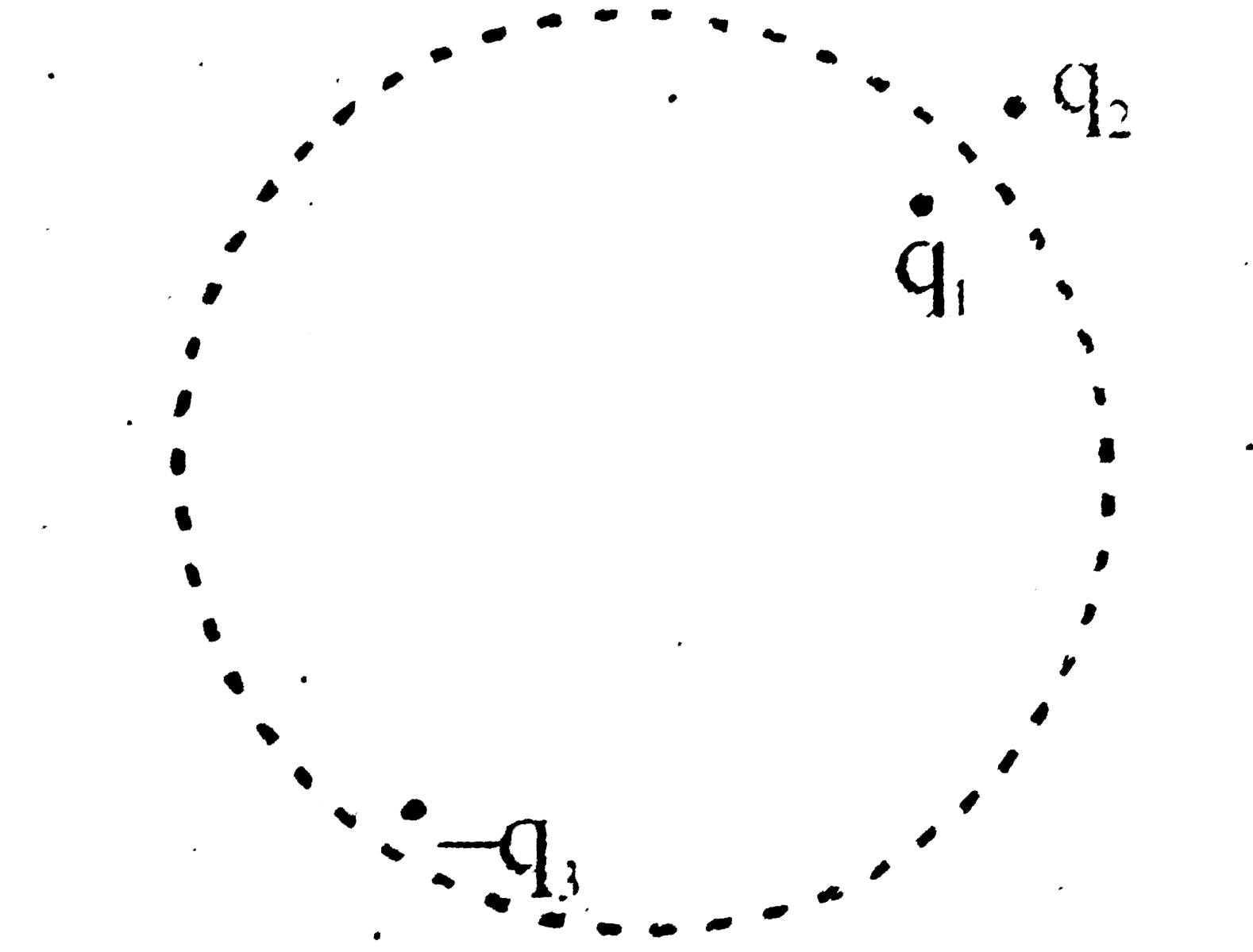A : We may have a Gaussian surface in which less number of field lines enter and more field lines come out.
R : The electric field E in the Gauss's law is only due to the enclosed charges.
If both Assertion & Reason are true and the reason is the correct explanation of the assertion, then mark (1).
If both Assertion & Reason are true but the reason is not the correct explanation of the assertion, then mark (2).
If Assertion is true statement but Reason is false, then mark (3).
If both Assertion and Reason are false statements, then mark (4).
The correct Answer is:C
To solve the assertion-reason question, we will analyze both statements step by step.
Step 1: Understanding the Assertion
The assertion states: "We may have a Gaussian surface in which less number of field lines enter and more field lines come out."
- Explanation: This means that within a closed Gaussian surface, the electric field lines that are exiting the surface are greater in number than those entering it. This implies a net positive electric flux through the surface.
Step 2: Applying Gauss's Law
According to Gauss's Law, the total electric flux (Φ) through a closed surface is given by:
Φ=∮E⋅dA=Qenclosedϵ0
Where:
- Φ is the electric flux,
- E is the electric field,
- dA is the differential area vector,
- Qenclosed is the total charge enclosed within the surface,
- ϵ0 is the permittivity of free space.
- Explanation: If more field lines are exiting than entering, it indicates that the net flux is positive, which means that the enclosed charge Qenclosed must also be positive.
Step 3: Understanding the Reason
The reason states: "The electric field E in Gauss's law is only due to the enclosed charges."
- Explanation: This statement is misleading. While the enclosed charge contributes to the electric field, the electric field E at any point on the Gaussian surface can also be influenced by external charges. Therefore, the electric field is not solely due to enclosed charges.
Conclusion
- Assertion: Correct. A Gaussian surface can indeed have more field lines exiting than entering, indicating a positive enclosed charge.
- Reason: Incorrect. The electric field E is influenced by both enclosed and external charges.
Thus, the final answer is:
- Statement A is correct, and Statement R is incorrect.
The assertion states: "We may have a Gaussian surface in which less number of field lines enter and more field lines come out."
According to Gauss's Law, the total electric flux (Φ) through a closed surface is given by:
Φ=∮E⋅dA=Qenclosedϵ0
Where:
- Φ is the electric flux,
- E is the electric field,
- dA is the differential area vector,
- Qenclosed is the total charge enclosed within the surface,
- ϵ0 is the permittivity of free space.
The reason states: "The electric field E in Gauss's law is only due to the enclosed charges."
- Assertion: Correct. A Gaussian surface can indeed have more field lines exiting than entering, indicating a positive enclosed charge.
- Reason: Incorrect. The electric field E is influenced by both enclosed and external charges.
- Statement A is correct, and Statement R is incorrect.
Similar Questions
Knowledge Check
STATEMENT -1 : If ∮→E.¯¯¯¯ds over a closed surface is negative,it means the surface encloses a net negative charge.
STATEMENT-2 : We may have a Gaussian surface in which three lines enter and five field lines are coming out.
STATEMENT-3 : The quantity ∮→E.¯¯¯¯ds is independent of the charge distribution inside the surface.AT T TBF F TCF T FDT F FIf 8 field lines come out of + 1 C charge, how many field lines will end at -2C charge?
A0B8C16D32The electric field lines coming out of an equipotential surface are
Aperpendicular to the surfaceBparallel to the surfaceCin all directionsDzero
Draw the electric field lines due to two equal and opposite point charges.
View SolutionElectric Field Lines|Electric Flux|Gauss Law
View SolutionA Gaussian surface in the fig. is shown by dotted line. The electric field on the surface will be :-

View SolutionA cylindrical suface is placed in uniform electric field in such a manner that axis of cylinder is parallel to the electric field intensity . Using the Gauss's law , prove that the net charge enclosed by this cylindrical surface must be zero.
View SolutionDraw the electric field lines due to two equal and same point charges.
View Solution

